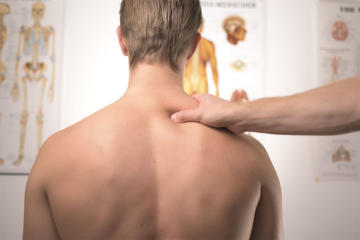Are Your Headaches Not Getting Better?


Headache treatment at Synergy.
I thought you might find it interesting to know how we specifically look at headache management. Synergy is known for treating patients with complex headache issues, and you might not know that. These are the main areas we look at: history of falls, trauma/injuries throughout the whole body, nutrition (food sensitivities), sleep, sleep postures, birth history, positional and occupational habits, and recreational and hobby postures.
When treating headaches that are not cranial-trauma induced, it is necessary to take into account posture when sitting, standing and in supine. A person’s posture is developed from habit, occupational and recreational repetitive activities, emotional strain, and injuries. So determining the history of falls, especially hard falls on the coccyx, sacrum or ischial tuberosities is very important. The reason why
Imagine it happening to the tiny muscles up through the spine. These muscles have the capacity to shift and change over and over throughout the day and night. Studies show that they fire before any motion actually happens in preparation to protect the spine, however if a few of them are in the contracted short or elongated position, other muscles will have to accommodate for them. This is generally not a problem, but what if they can’t accommodate anymore? Such as in permanent arthritic changes, surgery, disc damage, or a whiplash injury.
It then becomes imperative to give the body as much accommodation as possible in the available structures. Problems low down can contribute to headaches and pain syndromes along with myriad other complaints.
So, how we treat is not as important as why we treat the way we do. What is the rationale for the process that we use?
- Removing edema and improving venous drainage through lymphatic drainage therapy, manual lymphatic massage, Strain Counterstrain venous/lymphatic techniques, or total body balancing (old Osteopathic global body treatment) is generally the first approach. We have many techniques to improve fluidic flow through the thoracic inlet.
- Bone and ligament restrictions need to be addressed. We also check for spring in the rib cage. If that entire area is rigid and fixed, it can lead to all sorts of mischief.
- Next, we look at muscular and fascial restriction. Whatever cervical musculature is in spasm can be relieved through lymphatic techniques, Myofascial Release or Strain Counterstrain.
- We can determine specific arteries, veins, or nerves that are causing dysfunction and free them up.
Motion is first priority, then alignment through structural mobilization and then finally
strengthening with the body in a balanced position.
Once the pelvis, thoracic and cervical spine influences to the cranium have been reduced, I will utilize Craniosacral Therapy techniques to specifically mobilize local structures that continue to be drivers of the pain/symptoms. These techniques are best suited to patients with post concussive syndrome, traumatic brain injury, vertigo, trigeminal neuralgia, Bell’s palsy, vision and auditory problems, (structurally based) birth trauma including colic, torticollis (jugular foramen compression) and myriad other specific cranial issues.
Lastly, I utilize progressive relaxation techniques to teach patients how to let go of muscle tension that they might not be aware of and review postures that might be contributing to maintaining dysfunctional patterns.
Vitality, mobility and position are the tenants of the clinic. Hope you enjoyed the leisurely walk through my thinking process.
Sometimes a headache isn’t just a headache.
If you would like to read the full version the link is here. Link here to an article we sent to doctors.

Shauna upside down and out of the box
Best,
Shauna Burchett, OTR/L, owner

